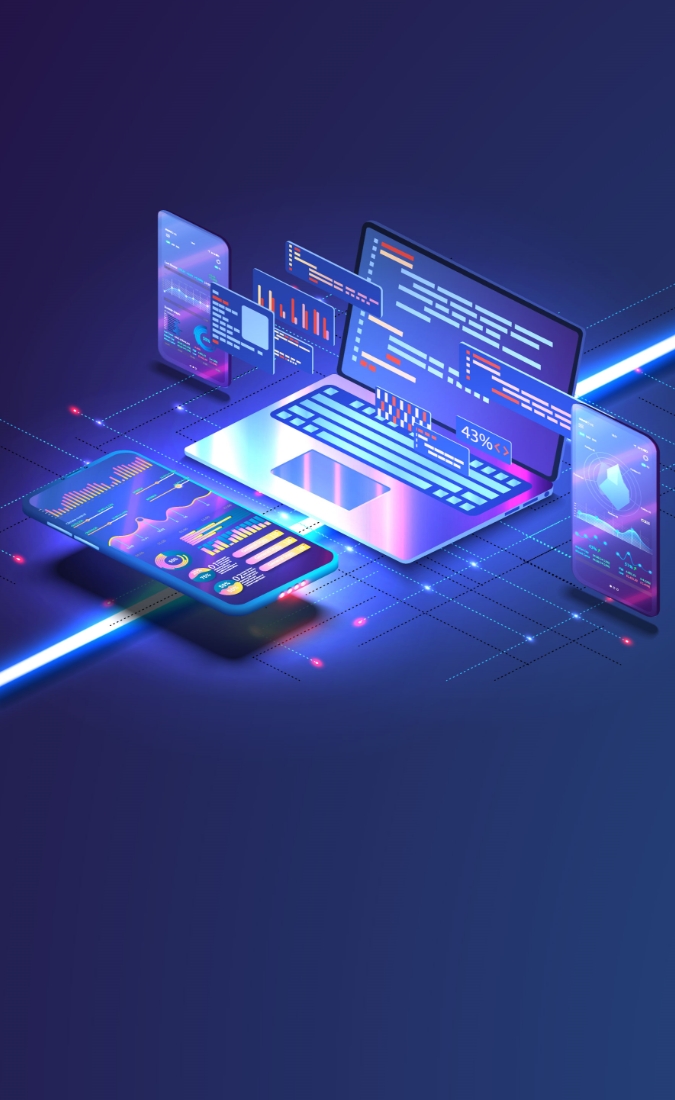This website uses cookies so that we can provide you with the best user experience possible. Cookie information is stored in your browser and performs functions such as recognising you when you return to our website and helping our team to understand which sections of the website you find most interesting and useful.
Let’s Make Your IoT Journey Successful
12.3 billion—big number, isn’t it? This is where the number of IoT devices or active endpoints is expected to reach in 2021. What’s more, by 2025, the same number is set to reach over 27 billion! Seeing this, it would be fair to say that IoT as a concept is on a steep, upward trajectory.
Every business today has some form of an IoT presence—be it devices, architectures, data, or an ecosystem.
And yes, there’s no doubt this surge is happening because of the immense advantages that IoT transformations offer. Why? Because IoT transformations help unlock a data-rich view of user actions and preferences to personalize customer experience. They engage users in the most meaningful ways across every channel and in real time. They also help save costs, time, and effort and ensure that businesses are kept intact. Such shifts also increase productivity, yield, and quality, critical for companies to succeed in today’s immensely competitive world. In other words, every business that wants to be on top of its league must look at an IoT transformation to deliver even better results.
But some concerns are brewing in the background globally with IoT transformations. In this blog, we’ll deal with just that and explain how to course correct.
Reinventing the Wheel
A study in 2020 found that 75% of IoT projects fail. To add to the challenges, the research also found that 25% of Small and Medium-sized Businesses (SMBs) are still unaware of IoT and its applications in business. This begs the question, why and where is it going wrong?
Microsoft’s IoT Signal study found what the biggest challenges in IoT transformations were. 32% of businesses cited a high cost of scaling as their biggest challenge to overcome in their IoT journey, while 26% of companies cited a lack of necessary technology. Another 25% of businesses said that pilots demonstrate unclear business value or Returns of Investment (ROI), while 23% cited a lack of resources or a lack of knowledge.
So, how do businesses overcome these challenges? What IoT strategies should they implement? How do they remove complexities or find products that work specifically for them? What do they do with their existing legacy systems or applications, and how do they alter them for the cloud?
The most effective solution that businesses can implement is by focusing on creating a well-oiled IoT ecosystem that accounts for the business’ cloud journey. From getting the right answers to simplifying integrations, there are many solutions that companies that can try. Let’s delve deeper into them, shall we?
The Design Game
Product design—that’s the first thing to consider in the process of making your IoT journey more compelling. Creating technologically sound endpoints or devices is one thing but creating IoT-enabled devices that fit straight into an IoT ecosystem is where the magic lies. Businesses need to enable their existing business-critical legacy devices with IoT while keeping complexities in check.
At Cambridge Technology (CT), this is something that we have been helping our customers with—to bring an IoT frame of mind right into the design phase. With our team of experts, we have been assisting the customers to essentially lay the groundwork for technologically sound yet simplistic products that boost user experience. This also includes enabling existing legacy devices and applications with IoT to fit straight into a business’ specific IoT ecosystem—a challenge that has been tough to overcome.


The Integration Game
Half the battle is won once the design phase is complete. The next thing to focus on should be integration. Doing that right doesn’t just boost operational efficiency and visibility but also helps businesses realize the true potential of a hyperconnected IoT infrastructure.
From taking stock of their entire technology stack to gauging the performance of their clouds, applications, and devices, several stages need to be covered in the process of integration. Businesses also need to upgrade and integrate legacy systems and applications with the IoT stack to ensure seamlessness in business operations.
Our IoT experts have been helping customers to simplify integration and create value through IoT Development Services. We help them create an end-to-end implementation roadmap for integration across their IoT ecosystem. We integrate different devices, systems, and applications into the IoT stack and make changes to ensure seamless operations. The integrations also create value throughout their lifecycles by making operations smarter and more intelligent. It helps them strike the delicate balance they need to make their IoT projects successful.
Mining the ‘King’dom of Data
Another critical aspect of creating a holistic IoT ecosystem is using the data generated from the devices and other systems to derive actionable insights. After all, that is one of the biggest reasons why businesses undertake an IoT journey.
For this, businesses need solutions that simplify the raw data, streamline them into data pipelines, prepare them for analysis, and derive actionable insights. Not only is this process critical to create a balanced IoT strategy, but it is also a strenuous one with the amount of data increasing in volume as businesses go deeper into their digital transformation journeys.

With our IoT Data Engineering and analytics services, we can help simplify the process to ensure that businesses get the value they need from their IoT journeys. We allow companies to streamline ingestion, integration, processing, and storage. This paves the way for customers to focus on their business with intelligence and accuracy, derived from better integrations and analytics.
Ready to make your IoT journey successful?
Source:
https://iot-analytics.com/number-connected-iot-devices/
https://www.softeq.com/blog/75-of-iot-projects-fail-heres-what-you-could-do-to-avoid-this-scenario
https://www.raconteur.net/technology/internet-of-things/apathy-iot-challenge/
https://azure.microsoft.com/mediahandler/files/resourcefiles/iot-signals/IoT%20Signals_Edition%202_English.pdf







